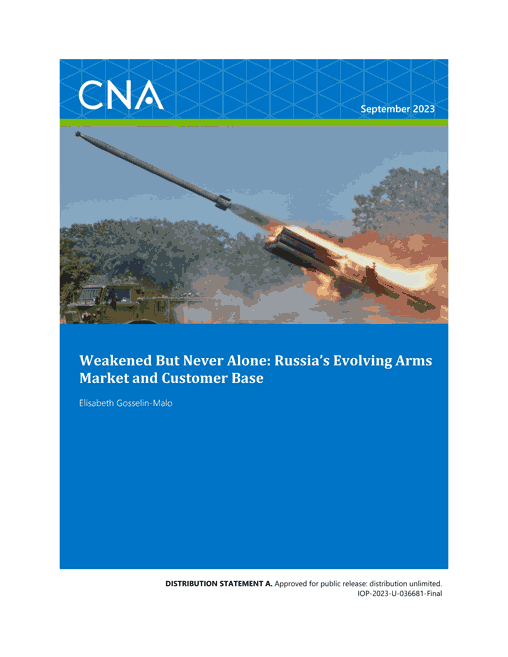Russia’s invasion of Ukraine in February 2022 marked one of the most drastic transformations the international defense industry has witnessed in the twenty-first century. This paper seeks to analyze the two realities that have emerged as a result of the war and have affected Russian defense export capabilities and who is willing to buy its military systems.
First, the report will highlight how the Ukraine war has reasonably affected Moscow’s customer base, where previous buyer countries have either canceled orders or decreased their dependency on Russian-made weapons in order to invest in their own domestic industries. Second, the report will illustrate how new players have been propelled forward by capitalizing on Russian military companies’ focus on the conflict in order to win export contracts.
Over the last 19 months, the Russian military-industrial complex has been geared toward sustaining the massive war effort. Plants have been pushed to increase production of tanks and armored vehicles, all while old Soviet-era equipment has been pulled out of storage to replace the large number of losses recorded on the battlefield.
Documented estimates of vehicle losses range in the thousands, especially among tanks, infantry fighting vehicles (IFVs), armored personnel carriers, and artillery, all key pieces of equipment employed on the frontlines. Similarly, Russian forces have also seen a widespread use of drones, tactical and strategic air defense systems, electronic warfare, and, of course, light weaponry, which has served to equip its mobilized soldiers. Aerial (helicopters and aircraft) and naval units have also made an important contribution but have not witnessed the same level of employment or rate of attrition. The Russian Aerospace Forces (VKS), in fact, remains a largely intact force.
These elements have all played an important role in determining how much room for maneuver the Russian state and its defense industry maintain for military exports. As old T-62 tanks and BMP-1s are refurbished, the production and fielding of newer systems, such as the T-90, BMP-2, and BMP-3, become critical, as Russian land forces remain hungry for modern heavy vehicles. This continued elevated internal demand causes the national industry to be unavailable for export. At the same time, items such as helicopters, light trainers, and some jets have not seen the same level of attrition and thus do not require the same degree of replacement, leaving more room for export. These battlefield realities, as will be shown throughout this report, have shaped the export capacity of the Russian companies now organized, above all else, to sustain their national forces first.
Download reportDISTRIBUTION STATEMENT A. Approved for public release: distribution unlimited.
Details
- Pages: 38
- Document Number: IOP-2023-U-036681-Final
- Publication Date: 10/2/2023
